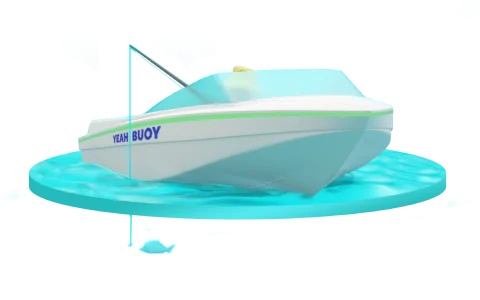It can be the stuff of nightmares or a simple process of boating. Launching and retrieving your vessel is something no trailer craft owner can avoid if you want to spend your day on the water and not in the driveway. To the untrained eye a boat ramp can look like an overly complex beast. But those who learn the basics and obey the general ramp etiquette can make the task seamless.
Prior preparation prevents pain & shame
No one likes waiting for that one person getting their boat ready to launch on the actual ramp. The boat ramp should be for launching and retrieving your vessel only. Any preparation or pack-down should occur in the carpark before you get on the actual ramp, so you don't hold up another (more prepared) boatie from launching.
Some key things you should do to prep your boat for launching are:
- Remove your transom ties or hold down straps
- Check your bung plugs are in and secure
- Ensure all safety equipment is on board
- Make sure the engine key is in the boat (yes, it happens…)
- Secure your bow line to the boat and rolled up, so it is ready to grab once launching.
Then the only thing left to do on the ramp is to remove the safety chain and uncouple the winch strap.
If you're not very confident reversing your trailer yet, a couple of sessions in an empty carpark with some markers will help you get your boat in the water smoothly and efficiently.
The Boat Ramp Dance
There isn't a special rain dance you perform to pray for calm seas before you launch. But like dancing, there are a number of steps you should follow to make the process nice and clean.
- Wait your turn. If the ramp is busy or someone is retrieving their boat, it is common courtesy to let them finish before you attempt.
In some cases, ramps may be multi lane so there could be a designated launching or retrieving lane. Quickly check and see how the ramp is working on the day to avoid any embarrassment getting the launch wrong.
- Back down the ramp slowly so that the trailer enters the water to the point that the vessel's stern is in an adequate depth of water to be rolled/floated off the trailer and not bottoming out on the ramp itself.
- Have your bow line ready to go into the hands of your spotter or partner. Unhook your safety chain from the bow cleat and then the winch strap.
- Control the boat rolling or floating back off the trailer with the bow line so it doesn’t roll too quickly or escape your control if the gradient is steep.
- Once your partner controls the boat off the trailer to the side of the jetty or beach, slowly drive your vehicle and trailer off the ramp to the parking area.
Bonus tip: If you are launching at a ramp with a jetty, have your partner 'walk' the boat back along the jetty toward the end, so that anyone waiting to launch can do so while you are parking the trailer.
Retrieving your vessel
- Check your trailer is ready to retrieve your boat. Make sure no rollers have flipped upside down if they are self centering, and your winch strap isn't twisted or stuck in the winch block.
- Back your trailer into the water as straight as possible, and at a depth that allows the boat to float over the rear two-thirds of the trailer rollers.
- The boat should be moved forward slowly onto the trailer enough that you can unwind and attach the winch strap. If the boat ramp is shallow, make sure your outboard or leg is trimmed up so that it doesn’t hit the bottom and drag.
- Winch the boat up to the winch block and secure the boat to the trailer with the safety chain.
- Slowly tow the boat off the ramp making sure you are out of the way of pedestrians or other boaties.
- Once out of the way on the flat, you can refasten your tie down straps and prep your boat for the journey home.
There is a common no-no when retrieving which is power loading, or ‘driving’ your boat onto the trailer using the motor. This might seem efficient compared to winching it on, but it creates several issues like wash disturbing other boats or the risk of overshooting the trailer.
The long-term effect of the propeller operating so close to the ramp causes sand and sediment to erode away from the base of the concrete, creating gutters which makes it even harder to launch and retrieve your boat in the future.
Finally, if you are still learning the ropes, or launching at a new ramp or area for the first time, ask for a hand or some tips on how the ramp operates from a fellow local. It's less damaging to the ego to ask for help at the start than cry for help when you get stuck.

Looking for boat insurance?
Get covered with Tower, Coastguard's recommended boat insurer.